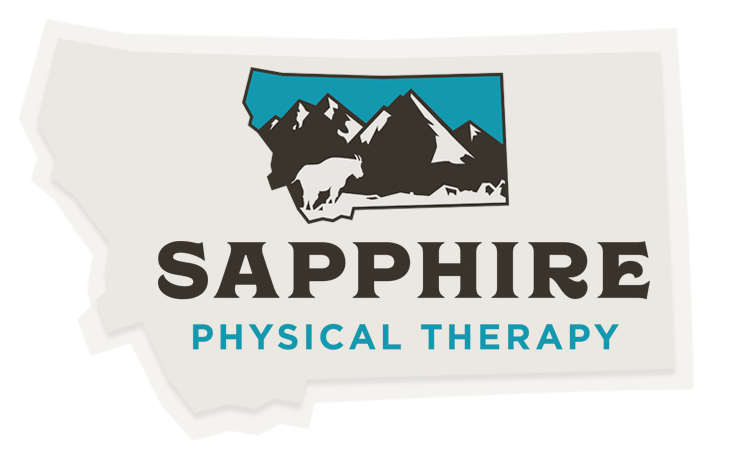
Knee OA: To run or not to run?
We gravitate toward running because of many wonderful benefits. To name a few, running maintains heart/ lung/muscle/ tendon/ bone density health, and that’s just the body. Running also helps improve mood, reduces stress (boosting the immune system), and gives us a great connection to the community.

New Exercise Physiology Services Available in Missoula
Join us in welcoming Sam Van De Velde, Exercise Physiologist to the many talented services available in the Sapphire Physical therapy building. From testing, coaching, to strength training, Sam is here to support you in your athletic endeavors from novice to expert.

Returning to Run Postpartum
When we have surgery or have a common orthopedic injury, there are typically protocols and guidelines for physicians and physical therapists to follow to determine the best plan of care moving forward. However, when it comes to recovering after having a baby, there are little guidelines and research to help guide the recovery process.

The Windlass Mechanism & Foot Function
The wonders of the human foot go beyond the 28 bones, articulating joints, and over 100 tendons and ligaments. The foot contains four layers of muscle responsible for toe and foot motion and stability. Regardless of the type of shoe you put on your foot, the foot itself is designed to absorb impact and propel us over ground and over a variety of terrain. One mechanism unique to the human foot is the windlass mechanism. The windlass mechanism is an ingeniously engineered feature which warrants our appreciation and understanding.

Hamstring Strains: Reducing Risk & Returning Faster
Hamstring injuries are common among runners and have a high rate of recurrence.1 Therefore, it is especially important to focus on isolated strengthening after injury to restore muscle function and reduce risk of re-injury.
Hamstrings work the hardest during the terminal swing phase of running, right before your foot contacts the ground. As the leg swings forward, the hamstrings lengthen and contract eccentrically to decelerate the hip and knee in preparation for foot contact.2 Therefore, it is important to have good hamstring strength in a lengthened range and make sure your strength is good both as the muscles are lengthening and shortening. Here are some general questions answered to help with recovery and reduce risk of injury.

Understanding Benign Paroxysmal Positional Vertigo
Ever have the sensation that the room is spinning? Worried about staying upright because of feeling off balance? Dizziness can be multifactorial and unpacking that big grey box can be a difficult task. Things that can make people dizzy are medications, hypoglycemia, rapid change in blood pressure or volume, anxiety, anemia, central nervous system insult, visual motion sensitivity, cervical pain/whiplash, or impairment in the inner ear are a few. Dizziness can also be described as vertigo, according to Dorland’s Medical Dictionary, an illusion of movement.

Office Ergonomics & Exercise For Neck Pain Relief
Office work is inherently repetitive, and can require prolonged, awkward positions and repetitive motions to perform tasks throughout the workday. Due to the tendency toward repetitive work and sustained positions over a number of hours, it is not surprising that there is a relatively high instance of neck and shoulder pain in people who work in this setting. Studies have shown a correlation between impaired muscle function and weakness in the neck, and neck pain or certain types of headache. Other studies have implicated poor workspace ergonomics as contributing to neck and shoulder pain specifically. Addressing both ergonomic needs and postural strength can be helpful when attempting to manage or prevent pain associated with work in an office setting.

You’ve Got Your Back!
We runners (hopefully) think about our legs and core strength, and occasionally our arms when summer hits, but what can get neglected is our spine. To think about the spine as one thing takes away from what it is—364 joints, with ligaments, and many layers of supportive muscle surrounding a large part of our nervous system, and the whole enchilada is supposed to move. While strengthening the muscles of our back is highly recommended and will likely have a beneficial influence on our posture, we have to allow our spine to move from the rigid position our mother has been telling us to hold for so long. We say move it: bend forward, backward, lean and turn.

Fall Sapphire Physical Therapy News Update
Fall is here and despite the smoky skies and record heat, summer was and exciting time at Sapphire Physical Therapy. Our physical therapy staff was busy evaluating and treating motivated individuals aged nine to ninety in our recently expanded gym.

Improve Foot Function to Reduce Injury Risk
As runners, our feet take a beating. The human foot is designed with locomotion in mind. Healthy foot function hinges on a balance of mobility, strength, and support. When one of these three necessary components is compromised, injury risk increases.
